
|
|
Font Size:
|
||||
|
|
|
|
||||
STATISTICAL BRIEF #424:
The Long-Term Uninsured in America, 2008-2011 (Selected Intervals): Estimates for the U.S. Civilian Noninstitutionalized Population under Age 65
Highlights
- Approximately 20.4 million people, 7.6 percent of the population under age 65, were uninsured for the four-year period from 2008 through 2011. The percentage of long-term uninsured exceeded 10 percent for some younger adult age groups.
- Adults ages 18 to 24 and 25 to 29 were the most likely to be uninsured for at least one month (48.0 and 46.9 percent, respectively) during 2010-2011. Children under age 18 were the least likely to be uninsured for the full four-year period from 2008-2011 (2.3 percent).
- Individuals reported to be in excellent or very good health status were the least likely to be uninsured for at least one month during 2010 to 2011 (26.6 and 31.1 percent, respectively).
- Hispanics were most likely to be uninsured for at least one month during 2010 to 2011 (47.8 percent) and for 2008-2011 (17.4 percent).
- Hispanics were disproportionately represented among the long-term uninsured. While they represented 18.2 percent of the population under age 65, they comprised 41.5 percent of the long-term uninsured for 2008-2011.
- Individuals who were poor, near poor, and low income were represented disproportionately among the long-term uninsured. While poor individuals represented 16.8 percent of the population under age 65, they represented 29.9 percent of those uninsured for 2008-2011.
Introduction
Estimates of the health insurance status of the U.S. civilian noninstitutionalized population are critical to policymakers and others concerned with access to medical care and the cost and quality of that care. Health insurance helps people get timely access to medical care and protects them against the risk of expensive and unanticipated medical events. When estimating the size of the uninsured population, it is important to consider the distinction between those uninsured for short periods of time and those who are uninsured for several years.Using information from the Household Component of the Medical Expenditure Panel Survey (MEPS-HC) for 2010 and 2011, this Statistical Brief provides detailed estimates for the U.S. civilian noninstitutionalized non-elderly (under age 65) population that was uninsured for the entire 2008–2011 period and identifies groups most at risk of lacking any coverage during that four-year period. The inclusion of questions in MEPS to determine health insurance coverage profiles for the period covering 2008 and 2009, in concert with information on health insurance profiles from the National Health Interview Survey for 2009, facilitated these analyses of extended longitudinal profiles. All differences between estimates discussed in the text are statistically significant at the 0.05 level unless otherwise noted.
Findings
According to the MEPS-HC for 2010 and 2011, 31.5 percent (84.5 million people, estimate not shown) of the under-65 population was uninsured for at least one month during the two-year period (calendar years 2010 and 2011), and 11.5 percent (30.8 million people, estimate not shown) was uninsured for the entire two-year period. Approximately two-thirds of those individuals lacking coverage for all of 2010–2011 were also without coverage for the entire prior 2008–2009 two-year period. This translates to 7.6 percent (20.4 million people, estimate not shown) of the total population under age 65 being uninsured for the entire four-year period from 2008 through 2011.The age groups 18 to 24 and 25 to 29 were the most likely to be uninsured for some time during 2010 to 2011. For persons 18 to 24 and 25 to 29, 48.0 and 46.9 percent were uninsured for at least one month or more, respectively (figure 1). Children less than 18 were the least likely to be continuously uninsured for the full two-year period from 2010–2011 as well as for the entire 2008–2011 four-year period. Only 2.3 percent of children less than 18 years were uninsured for the entire 2008–2011 four-year period.
Individuals reported to be in excellent or very good health status were the least likely to be uninsured for some time during 2010 to 2011. For those in excellent health, 26.6 percent were uninsured at least one month; while for those in very good health, 31.1 percent were uninsured at least one month over the same time period (figure 2). Three-fifths of the 14.5 percent of individuals in fair or poor health lacking coverage for all of 2010–2011 were also without coverage for the entire four-year period from 2008 to 2011. This translates to 8.8 percent of the total population under age 65 in fair or poor health being uninsured for the entire 2008–2011 four-year period.
Among people under age 65, Hispanics were substantially more likely than black non-Hispanics single race, white non-Hispanics single race, Asian or Pacific Islander non-Hispanics single race, or other single race/multiple race non-Hispanics to lack health insurance during the time intervals under consideration. Among Hispanics under age 65, 47.8 percent were uninsured for at least one month, while 23.7 percent were uninsured for the entire 2010–2011 two-year period (figure 3). Nearly three-fourths of Hispanics lacking coverage for all of 2010–2011 were also without coverage for the entire four-year period from 2008 to 2011. This translates to 17.4 percent of the total Hispanic population under age 65 being uninsured for the entire 2008–2011 four-year period.
Hispanics were represented disproportionately among the long-term uninsured. While Hispanics represented 18.2 percent of the population under age 65, they represented 41.5 percent of the long-term uninsured for the period 2008–2011 (figure 4). Conversely, while white non-Hispanics single race represented 61.1 percent of the under 65 population, they represented only 38.5 percent of the long-term uninsured for the period 2008–2011. Furthermore, for individuals with no coverage for the entire period 2010–2011, Hispanics were more likely to be represented in the subgroup having no coverage for the entire 2008–2011 four-year period (41.5 percent) than the subgroup that had acquired some health insurance coverage in the prior period 2008–2009 (30.2 percent).
Individuals who were poor (i.e., persons in families with income equal to the poverty line or less), near poor, and low income were represented disproportionately among the long-term uninsured. While poor individuals represented 16.8 percent of the population under age 65, they represented 29.9 percent of those uninsured for the entire 2008–2011 four-year period (figure 5). Conversely, individuals with high incomes (i.e., persons in families with income over 400 percent of the poverty line) represented 33.2 percent of the population under age 65 but accounted for only 9.7 percent of those uninsured for the entire 2008–2011 four-year period. Furthermore, for individuals with no coverage for the entire 2010–2011 period, high income individuals were more likely to be represented in the subgroup that had some prior health insurance coverage in the prior period 2008–2009 (15.6 percent) relative to those individuals with no coverage for the entire 2008–2011 four-year period (9.7 percent).
Data Source
The estimates shown in this Statistical Brief are drawn from analyses conducted by the MEPS staff from the following MEPS public use files: 2010 Full Year Consolidated Data File (HC-138); 2011 Full Year Consolidated Data File (HC-147); and the MEPS Panel 15 Longitudinal Data File (HC-148). In addition, linkage of the MEPS sample to the 2009 National Health Interview Survey was undertaken for this Statistical Brief.Definitions
Population coveredPersons included in this analysis were present for the entire two-year reference period, 2010–2011.
Uninsured
People who were covered only by non-comprehensive state-specific programs (e.g., Maryland Kidney Disease Program) or private single- service plans (e.g., coverage for dental or vision care only, coverage for accidents or specific diseases) were considered to be uninsured. Those sample persons identified in MEPS as being uninsured on January 1, 2010, were asked if they were covered by a health insurance plan or program at any time in 2008 or 2009 in order to determine their health insurance status over the 2008–2011 four-year period. Linkage was established with the 2009 National Health Interview Survey for sample persons uninsured for all of 2010–2011 to further edit their health insurance status prior to 2010.
Age
Age was defined as age at the end of 2010.
Race/ethnicity
Classification by race/ethnicity was based on information reported for each family member. Respondents were asked if each family member’s race was best described as American Indian, Alaska Native, Asian or Pacific Islander, black, white, or other. They also were asked if each family member’s main national origin or ancestry was Puerto Rican; Cuban; Mexican, Mexicano, Mexican American, or Chicano; other Latin American; or other Spanish. All persons whose main national origin or ancestry was reported in one of these Hispanic groups, regardless of racial background, were classified as Hispanic. Since the Hispanic grouping can include black Hispanic, white Hispanic, Asian and Pacific Islander Hispanic, and other Hispanic, the race categories of black, white, Asian and Pacific Islander, and other do not include Hispanic. MEPS respondents who reported other single or multiple races and were non-Hispanic were included in the other category. For this analysis, the following classification by race and ethnicity was used: Hispanic (of any race), non-Hispanic blacks, non-Hispanic whites, non-Hispanic Asian and Pacific Islanders, and non-Hispanic others.
Poverty status
Sample persons were classified according to the total yearly income of their family. Within a household, all people related by blood, marriage, or adoption were considered to be a family. Poverty status categories are defined by the ratio of family income to the federal income thresholds, which control for family size and age of the head of family. Poverty status was based on annual income in 2010.
Poverty status categories are defined as follows:
- Poor: Persons in families with income less than or equal to the poverty line, including those who had negative income.
- Near poor: Persons in families with income over the poverty line through 125 percent of the poverty line.
- Low income: Persons in families with income over 125 percent through 200 percent of the poverty line.
- Middle income: Persons in families with income over 200 percent through 400 percent of the poverty line.
- High income: Persons in families with income over 400 percent of the poverty line.
In every round, the respondent was asked the following question to rate the health of every member of the family: “In general, compared to other people of (PERSON)’s age, would you say that (PERSON)’s health is excellent, very good, good, fair, or poor?” Health status was based on the most recent value in 2010. For this Brief, the response categories “fair” and “poor” were collapsed.
About MEPS-HC
MEPS-HC is a nationally representative longitudinal survey that collects detailed information on health care utilization and expenditures, health insurance, and health status, as well as a wide variety of social, demographic, and economic characteristics for the U.S. civilian noninstitutionalized population. It is cosponsored by the Agency for Healthcare Research and Quality and the National Center for Health Statistics.For more information about MEPS, call the MEPS information coordinator at AHRQ (301) 427-1406 or visit the MEPS Web site at http://www.meps.ahrq.gov/.
References
For a detailed description of the MEPS-HC survey design, sample design, and methods used to minimize sources of nonsampling error, see the following publications:Cohen, J. Design and Methods of the Medical Expenditure Panel Survey Household Component. MEPS Methodology Report No. 1. AHCPR Pub. No. 97-0026. Rockville, MD: Agency for Health Care Policy and Research, 1997. http://www.meps.ahrq.gov/mepsweb/data_files/publications/mr1/mr1.shtml
Cohen, S. Sample Design of the 1996 Medical Expenditure Panel Survey Household Component. MEPS Methodology Report No. 2. AHCPR Pub. No. 97-0027. Rockville, MD: Agency for Health Care Policy and Research, 1997. http://www.meps.ahrq.gov/mepsweb/data_files/publications/mr2/mr2.shtml
Cohen, S. Design Strategies and Innovations in the Medical Expenditure Panel Survey. Medical Care, July 2003: 41(7) Supplement: III-5–III-12.
Cohen, S., Rhoades, J. Estimation of the long term uninsured in the Medical Expenditure Panel Survey. Journal of Economic and Social Measurement, 32 (2007): 235–249.
Ezzati-Rice, T.M., Rohde, F., Greenblatt, J. Sample Design of the Medical Expenditure Panel Survey Household Component, 1998–2007. Methodology Report No. 22. March 2008. Agency for Healthcare Research and Quality, Rockville, MD. http://www.meps.ahrq.gov/mepsweb/data_files/publications/mr22/mr22.shtml
Suggested Citation
Rhoades, J.A., and Cohen, S.B. The Long-Term Uninsured in America, 2008–2011 (Selected Intervals): Estimates for the U.S. Civilian Noninstitutionalized Population under Age 65. Statistical Brief #424. November 2013. Agency for Healthcare Research and Quality, Rockville, MD. http://www.meps.ahrq.gov/mepsweb/data_files/publications/st424/stat424.shtmlAHRQ welcomes questions and comments from readers of this publication who are interested in obtaining more information about access, cost, use, financing, and quality of health care in the United States. We also invite you to tell us how you are using this Statistical Brief and other MEPS data and tools and to share suggestions on how MEPS products might be enhanced to further meet your needs. Please email us at MEPSProjectDirector@ahrq.hhs.gov or send a letter to the address below:
Steven B. Cohen, PhD, Director
Center for Financing, Access, and Cost Trends
Agency for Healthcare Research and Quality
540 Gaither Road
Rockville, MD 20850
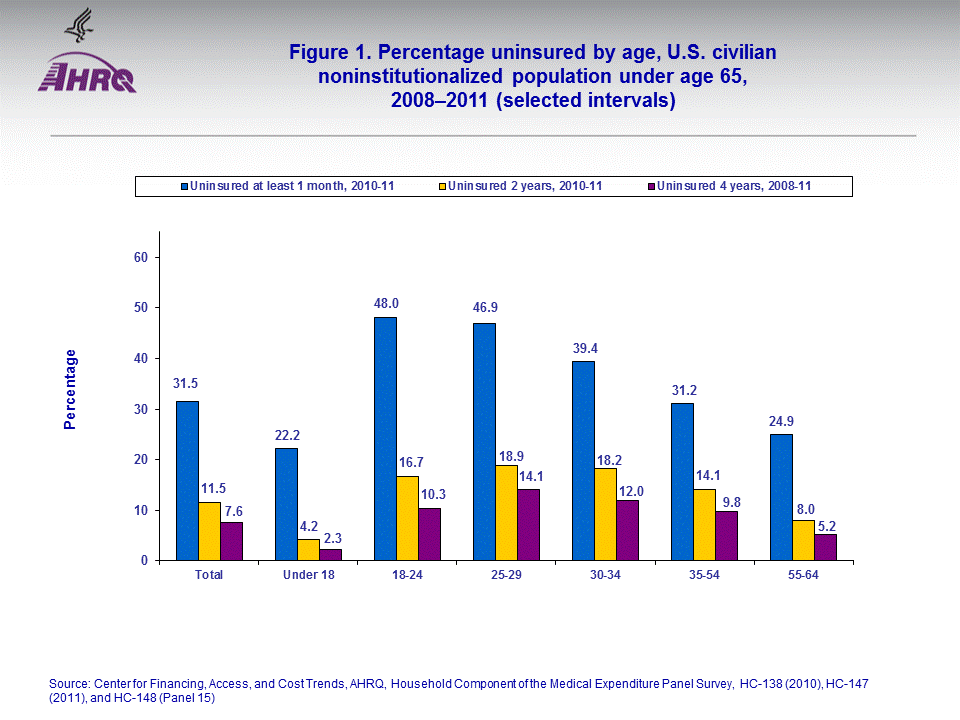 |
||||||||||||||||||||||||||||||||||||||||
|
||||||||||||||||||||||||||||||||||||||||
|
|
||||||||||||||||||||||||||||||||||||||||
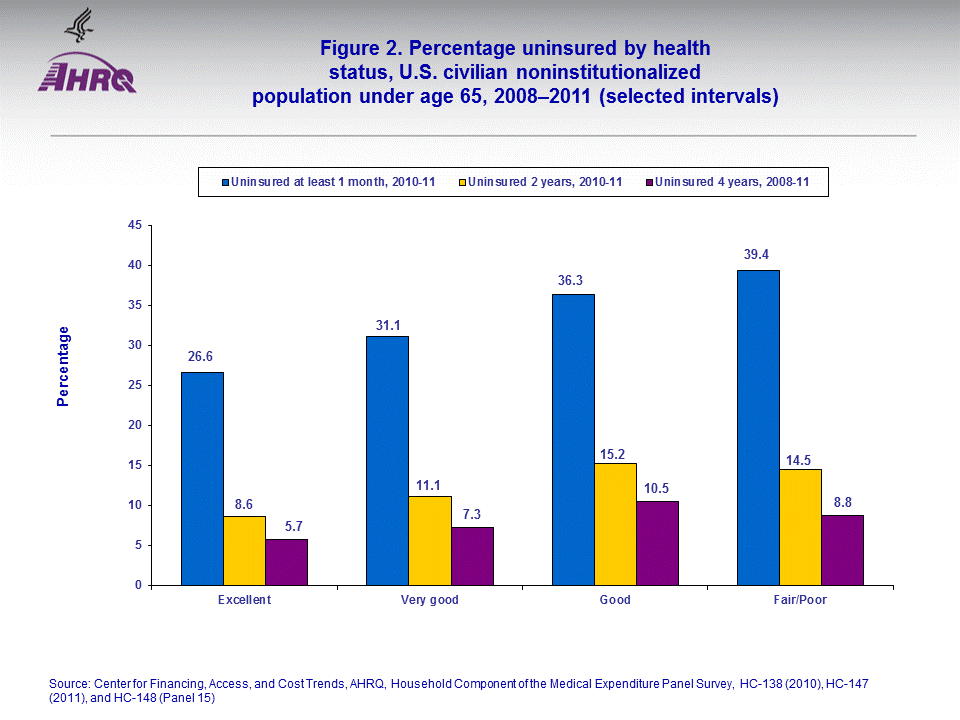 |
||||||||||||||||||||||||||||||||||||||||
|
||||||||||||||||||||||||||||||||||||||||
|
|
||||||||||||||||||||||||||||||||||||||||
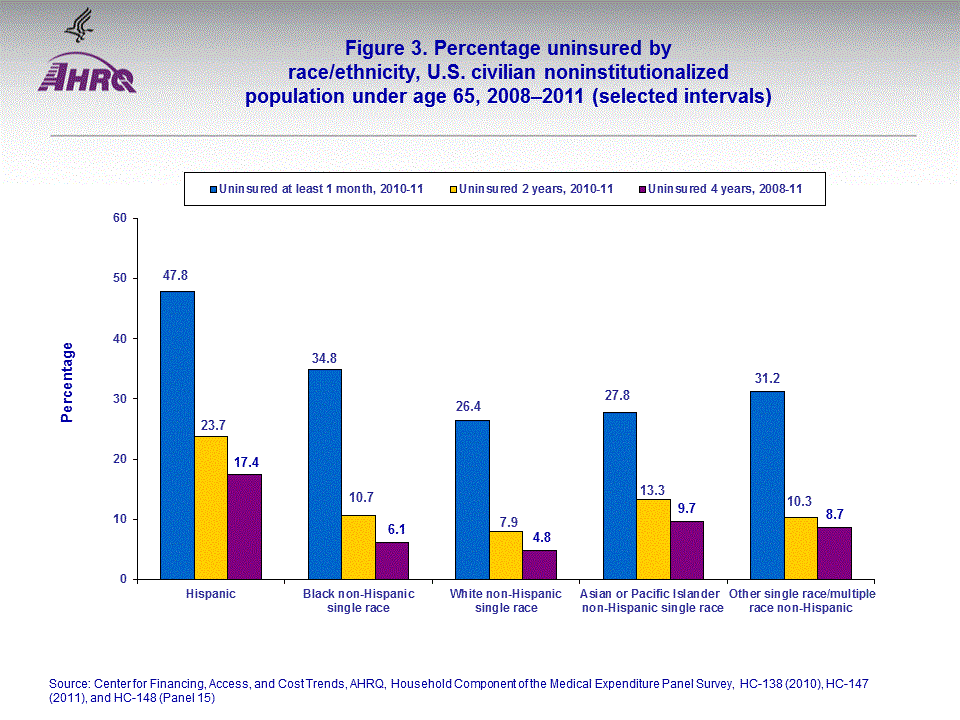 |
||||||||||||||||||||||||||||||||||||||||
|
||||||||||||||||||||||||||||||||||||||||
|
|
||||||||||||||||||||||||||||||||||||||||
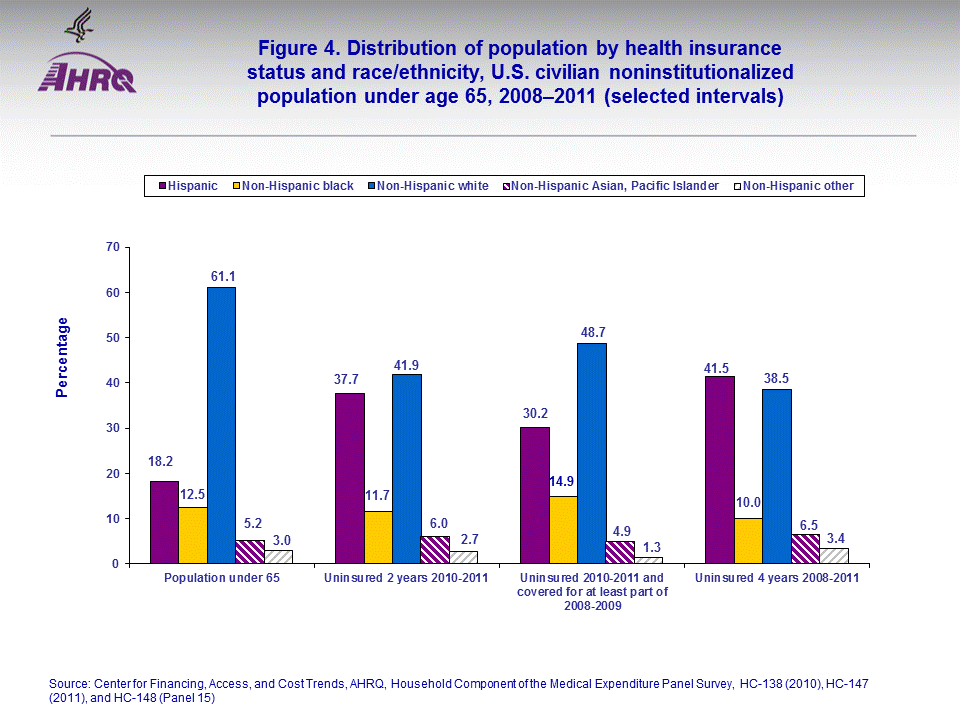 |
||||||||||||||||||||||||||||||||||||||||
|
||||||||||||||||||||||||||||||||||||||||
|
|
||||||||||||||||||||||||||||||||||||||||
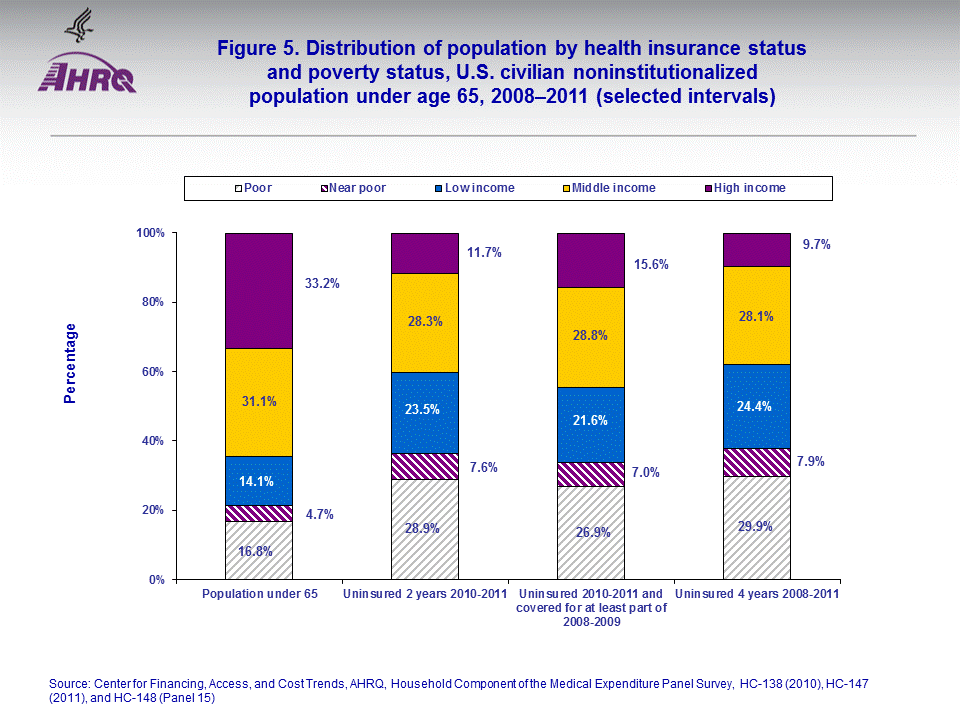 |
||||||||||||||||||||||||||||||||||||||||
|
||||||||||||||||||||||||||||||||||||||||
|
|
||||||||||||||||||||||||||||||||||||||||


